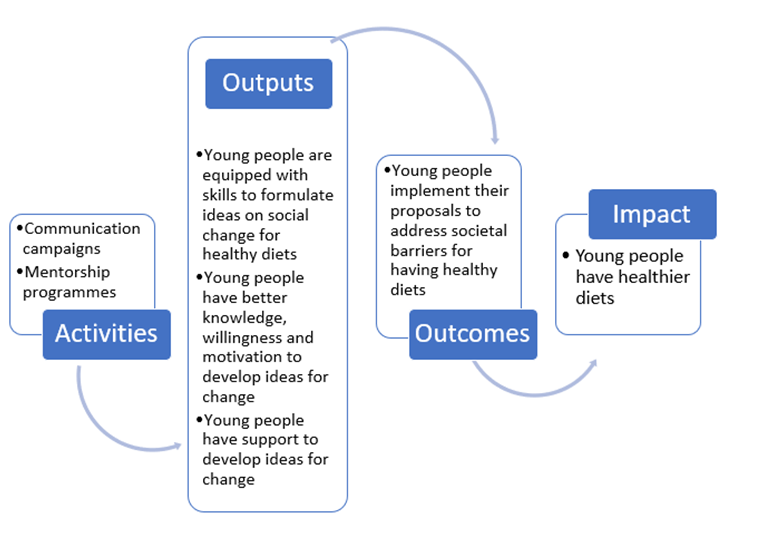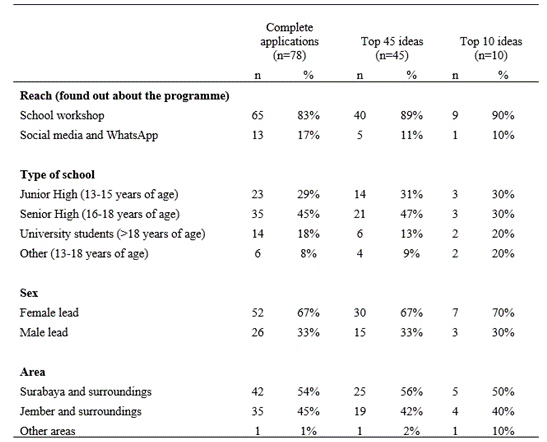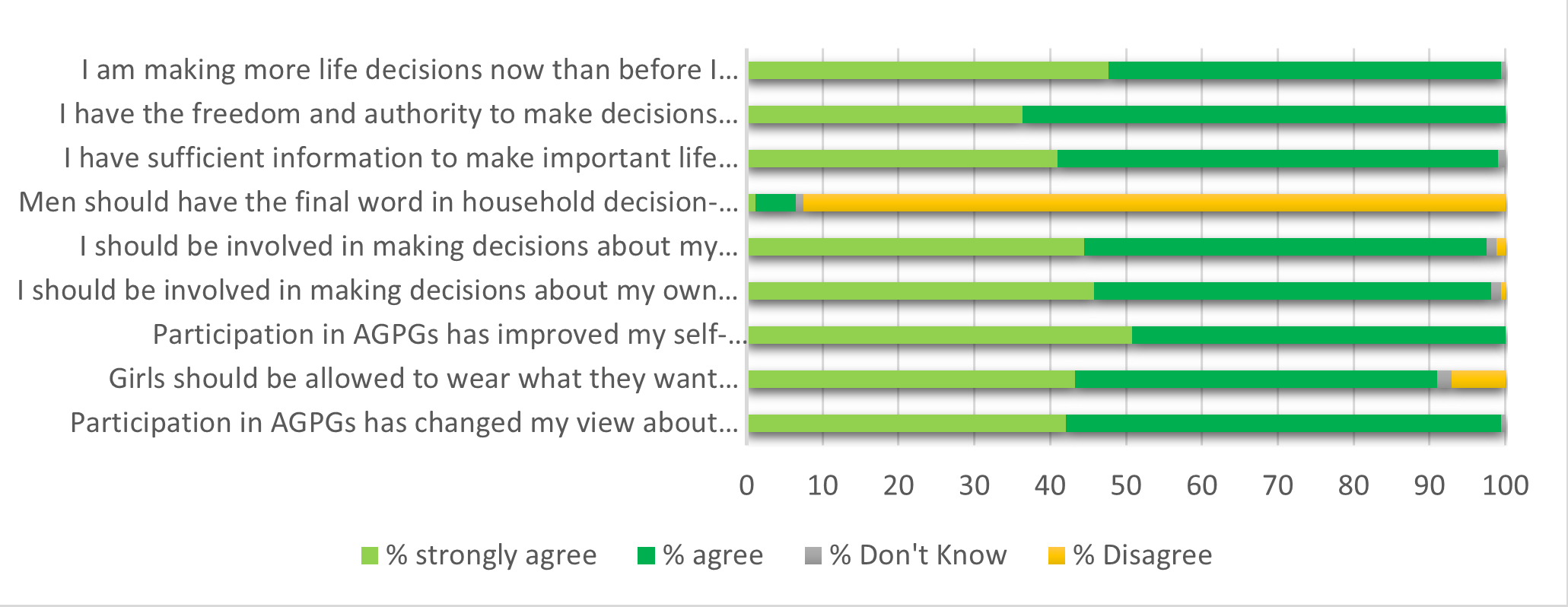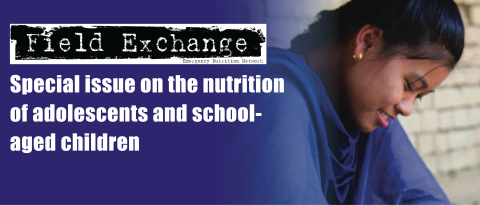Risk of nutritional deficiencies increases during female adolescence – a comparison of the cost of a nutritious diet across sex and age
By Zuzanna Turowska, Janosch Klemm, Nora Hobbs and Saskia de Pee
Zuzanna Turowska is a Food Systems Analyst in the Nutrition Division of the World Food Programme (WFP). Previously, she worked as a consultant for the Poverty, Health and Nutrition Division of IFPRI in the regional office for West and Central Africa. She holds a Master’s degree in agricultural and resource economics from the University of California, Davis.
Janosch Klemm is a consultant with the Systems Analysis for Nutrition team at WFP. He is currently undertaking a PhD at the Centre for Development Research (ZEFc), Bonn.
Nora Hobbs is a public health nutritionist. She is Deputy-Chief of the Systems Analysis for Nutrition team at WFP’s headquarters. She holds a Master’s degree in international health from the Royal Tropical Institute, Amsterdam.
Saskia de Pee is a Senior Technical Advisor for nutrition at WFP where she leads the Systems Analysis for Nutrition team. She is Adjunct Associate Professor at the Friedman School of Nutrition Science and Policy, Tufts University, Boston and at Human Nutrition, Wageningen University, the Netherlands. She has worked in public health nutrition for more than 25 years focusing on science as well as practical applications, policies and strategies.
Location: Global
What this article is about: Adolescent girls have increased nutrient needs that are not easy to afford in low-income countries. This analysis investigates how economic barriers may affect adolescent girls’ food choices.
Key messages:
- Although the cost of a diet that meets only energy requirements is less for an adolescent girl than for an adult male, the cost of a diet that covers nutrient requirements is higher.
- For most countries, the cost share of a nutritious diet for an adolescent girl is the greatest among the members of the standard five-person household modelled in Fill the Nutrient gap analyses. On average, an adolescent girl contributed to 33% of the household’s cost of a nutritious diet whereas an adult male contributed to 20%.
- The costs of nutrient adequate diets often peak around adolescence because adolescent girls require nutrient-dense foods to meet needs. In the contexts of Burundi and Timor Leste, even those foods that most cheaply cover nutrient needs are generally far more expensive than cereal staples.
- Functioning food systems are critical to ensure nutrient-dense foods are available and affordable. Programmes promoting food production and food security should be expanded to focus not only on cereal staples but also on comparatively cheap local sources of nutrients that provide both energy and a significant share of the micronutrients needed.
Introduction
Healthy diets that meet nutrient needs are critical across the lifecycle. Development stages, including that of puberty, increase the need for certain nutrients, placing individuals with poor physical or economic access to nutrient-dense foods at risk of nutrient deficiency (Bose et al, 2021). Studies have shown that the elevated nutrient needs related to the rate of growth and menstruation place adolescent girls at a heightened risk of anaemia and other nutrient deficiencies, making this group amongst the most nutritionally vulnerable (Christian & Smith, 2018). Major micronutrient deficiencies in adolescent girls, in countries where adolescent pregnancy is high, is an important risk factor for low birth weight and child stunting.
Adolescent girls have received increased attention within the nutrition sector in recent decades (Madjdian et al, 2018), specifically on understanding the societal factors affecting food access and cultural norms – which can favour males (Aurino, 2017) – as well as the unhealthy food choices observed among adolescents (Mistry and Puthussery, 2015).
Recent studies have shown that healthy foods are restricted by prohibitively high costs, particularly in low and low-middle income contexts (FAO, IFAD, UNICEF, WFP & WHO, 2020). Therefore, this analysis seeks to understand how economic barriers affect the food choices of adolescent girls.
Since 2015, the Fill the Nutrient Gap (FNG) analyses developed by the World Food Programme (WFP) and partners have looked at the cost and affordability of meeting adolescent girls’ nutrient needs relative to those of other household members to estimate the comparative risk of nutritional deficiencies. Using FNG results from 20 low- and middle-income countries, we assessed how much more economically challenging it is to meet nutrient needs as compared to energy needs for adolescent girls relative to other household members at different points in the lifecycle between pre-adolescence and adult life. We also compared two “case studies” to better understand what factors in the food environment drive the vulnerability of adolescent girls.
Methods
Methods used in the Fill the Nutrient Gap analysis
FNG analyses consist of a secondary data review and a calculation of the least cost energy-only diet and the least cost staple-adjusted1 nutrient-adequate diet2 (“nutritious diet”) using Save the Children’s Cost of the Diet optimisation tool (Deptford et al, 2017). Each FNG analysis engages stakeholders and informs decision-making for the prevention of malnutrition (Bose et al, 2019).
Each FNG analysis estimates the cost of the nutritious diet and the cost of the energy-only diet for individuals and is typically estimated at the sub-national level. Between 2015 and 2021, FNG analyses were carried out in 31 countries with 20 included in this paper. Data for estimating diet costs came directly from food prices collected in each context. Among the 20 FNG analyses included in this paper3, eight use primary data collected specifically for FNG and 12 use secondary data (Consumer Price Index or household survey data). All national-level values are weighted averages calculated based on Cost of the Diet findings and population percentage for subnational levels. Household composition was standardised to allow for inter-country comparison and includes an adolescent girl, a moderately active adult male, a breastfed child aged 12-23 months, a child aged 6-7 years and a moderately active lactating adult woman aged 30-59 years old.
Using nationally aggregated cost estimates, we compared the cost of the energy-only diet and the cost of the nutritious diet between an adolescent girl and an adult male. Ratios for comparison between these two individuals were calculated by dividing the cost of the energy-only diet and nutritious diet for the adolescent girl by the cost of the same respective diets for the adult male. The ratio allows the assessment of the relative cost of meeting needs between those two individuals.
Methods used for the case studies
We selected Timor Leste and Burundi as case studies as they had one of the highest and lowest nutritious diet ratios between the adolescent girl and the adult man respectively.
For these case studies, we looked at how the cost of the nutritious diet for a child 10-11 years old4 would compare to that of an adolescent girl aged 14-15 years and of a woman 30-59 years (non-pregnant, non-lactating) to assess how the cost of nutrient adequacy would change across the life stages – from before until after adolescence.
For each country, we also extracted data to examine which three foods, identified in the least cost nutrient-adequate diet, contributed most significantly (in percentage terms of the recommended nutrient intake for each micronutrient) to coverage of adolescent girls’ needs for iron, calcium, zinc and folate, respectively. We included the weight of each selected food in the optimised nutritious diet and the percentage of the food weight that contributed to daily nutrient coverage. We then calculated the ratio of the price of one hundred calories of each food to the price of one hundred calories of a representative basket of starchy staple food in each country, following the method recommended by Headey and Alderman (2019). Main local staple foods were identified based on available market data and customary local food practices; we compared the cost of these foods to these pre-identified staples in their dry, uncooked form. Lastly, across all the zones for which diet costs were calculated, we showed the range of the contribution of each food item to the overall cost of the nutritious diet.
Results
Comparison of diet costs between an adolescent girl and an adult male
Across the FNG analyses of these 20 countries, the cost ratio for the energy-only diet ranged between 0.77 and 0.91, meaning that the cost of a diet that met energy requirements was consistently less for the adolescent girl than for the adult male (Figure 1).
This pattern was reversed for the cost ratio for the nutritious diets which ranged from 1.01 to 3.38, meaning that the cost of a diet that covered nutrient requirements was consistently higher for the adolescent girl than for the adult male. The average of the ratio for countries included in this analysis was 1.63.
Figure 1: Ratio of the cost for energy-only and nutritious diets between an adolescent girl and an adult man in 20 countries across Asia, Africa and South America

For most countries, the cost share of a nutritious diet for an adolescent girl was the greatest among the members of the standard five-person household modelled in FNG (Figure 2). On average, an adolescent girl contributed 33% of the household’s cost of a nutritious diet whereas an adult male contributed 20%.
Figure 2: Contribution to the cost of the nutritious diet by household members for a five-person household

Evolution of cost of nutrient adequacy across the life stages from before until after adolescence in Timor Leste and Burundi
We estimated the lowest cost of a nutritious diet for three individuals: a child aged 10-11 years, a girl aged 14-15 years and a woman aged 30-59 years in Timor Leste and Burundi (Figure 3). The results presented are shown in proportion to the cost of the nutritious diet for a child aged 10-11 years. We found that, as a girl went from 10-11 years into adolescence, the cost of the nutrient adequate diet increased by 252% in Timor Leste and by 139% in Burundi. After adolescence, this cost decreased but was still higher than pre-adolescent costs in both countries.
Figure 3: Ratios between the daily cost to access a nutritious diet for a child 10-11 years compared to an adolescent girl and an adult woman, in Timor Leste and Burundi.

Note: In 2019 local currency, the cost of the nutritious diet for the child (10-11 years) was USD1.02 in Timor Leste and and BIF723 in Burundi.
Cost of top three micronutrient-rich food items in nutritious diets of adolescent girls in Timor Leste and Burundi
In both Timor Leste and Burundi, we examined to what extent the micronutrient content of each of the three main food sources in the optimised diet for an adolescent girl would contribute to covering her micronutrient needs. Table 1 shows the price ratio between the caloric price of each food compared to the caloric price of staples.
In Timor Leste, the optimised diet included comparatively more low-calorie, high-nutrient density foods such as dried beef meat and leaves than in Burundi.
For Timor Leste, the caloric costs of non-staple foods that most cheaply covered iron, calcium, zinc, and folate were between 3 to 27 times more expensive per 100 calories than the standard staple (rice). Animal-source foods in Timor Leste were particularly expensive; dried beef and eggs were included in the optimised diet for iron and folate coverage respectively and, despite being included in portions of roughly 100g (around 7% of the diet’s weight5) accounted for between a quarter to half of the total cost.
In Burundi, adolescent girls’ nutrient needs were covered by foods containing both energy and micronutrients at comparatively low prices. Beans and pulses cost only slightly more per calorie than the staples (cassava and maize) therefore allowing for relatively inexpensive coverage of iron, zinc and folate.
Caloric price ratios for green leafy vegetables were less in Burundi than in Timor Leste. As in Timor Leste, animal-source foods (dried fish) had a high caloric price ratio; however, in Timor Leste, animal-source foods were identified as the lowest cost options for coverage of three of the four micronutrients analysed while in Burundi only dried fish was selected for calcium coverage.
Table 1: Top three foods contributing to covering the micronutrient needs of an adolescent girl in Timor Leste and Burundi
* MDD-W: Minimum diet diversity for women
** AG: adolescent girl
Note: The sum of the percentages may add up to over 100% by case study and micronutrient as not all modelling areas included the same foods in the optimised nutritious diet, i.e., one kind of green leafy vegetable covered over a third of iron needs in one of the modelling zones while a different type of leafy green vegetable covered over a third of iron needs in another modelling zone.
Discussion
When only considering their energy needs, we found the diet of an adolescent girl costs less than that of an adult man because an adolescent girl has lower energy needs. However, we found that the least-cost nutritious diet for the adolescent girl was, on average, 1.63 times more costly than that of an adult man. Because adolescent girls have higher absolute needs for protein, calcium, iron and zinc, they require more foods that are nutrient-dense, i.e., foods that contribute to filling nutrient gaps without providing much energy.
Nutrient needs change along the lifecycle, as does the cost of nutrient adequacy, leaving adolescent girls most vulnerable. The costs of nutrient-dense foods vary, specifically with regard to their content of iron, calcium, zinc and protein. These foods can often be expensive particularly when they are animal-source foods. The case studies of Timor Leste and Burundi showed that differences in how sharply the cost of a nutritious diet increased as a female child became an adolescent was determined by the types and cost of foods that were the most cost-efficient source of these nutrients.
In Timor Leste, for which we estimated one of the highest ratios between the cost of a nutritious diet for an adolescent girl and that of an adult male (2.80), the relative caloric price of nutritious foods was high and households had to spend considerable resources to access animal-source foods and vegetables to meet their nutrient needs. In Burundi, where the ratio between the cost of the nutritious diet for an adolescent girl and that of an adult male was one of the lowest (1.22), nutrient-dense foods did not cost much more than foods that were mainly good sources of energy. In particular, pulses were a good source of both energy and specific nutrients (e.g., iron, zinc, folate and calcium) and leafy vegetables were nutrient-dense and relatively cheap. The differences identified between Timor Leste and Burundi point to characteristics of the food environment such as good sources of different nutrients and their relative cost compared to staples.
The differences identified between the food environments of Timor Leste and Burundi did not translate into differences in the affordability of diets nor of nutrition outcomes. In Burundi, for example, although beans are available and inexpensive, low income and high poverty keep household food expenditure levels low; it can therefore not be assumed that households can afford to include beans in their diets. FNG analyses estimated that both Timor Leste and Burundi had a high percentage of households that would not be able to afford the nutritious diet (77% and 70%, respectively) and national surveys find high rates of stunting in children under five (46% and 56% respectively) (GDS, 2018; MPBGP, 2017).
In most low- and middle-income settings, the political, developmental and agricultural policies of the past several decades have been oriented primarily towards the production of staple foods to ensure adequate food supply (Pingali, 2015) rather than nutritious foods (OECD, 2021). Programmes promoting food production and food security should be expanded to focus not only on cereal staples but also on comparatively cheap local sources of nutrients like beans which, as can be seen in the Burundi example, provide both energy and a significant share of the micronutrients needed to cover nutrient needs.
To meet the needs of an adolescent girl, households must be able to purchase and/or produce an adequate quantity of nutritious foods. Across the FNG analysis included in this paper, 39% to 76% of households could not afford a nutrient-adequate diet in low-income countries and 11% to 78% in low-middle income countries. If the household cannot afford the lowest-cost nutritious diet, the needs of those with the highest costs of the nutritious diets – such as adolescent girls – are most likely not met. Interventions that focus on social protection, that support income-generation or strengthen livelihoods with diversification of food production and the transformation or preservation of nutritious foods can help to reduce the barriers to accessing nutritious diets.
Efforts to add micronutrients to the diets of vulnerable groups, including adolescent girls, need to be increased. Fortification and bio-fortification of staples and commonly consumed foods and condiments, such as fish sauce, bouillon cubes and salt, can inexpensively provide nutrients for the general population (WHO & FAO, 2006). Adolescent girls, whether they are pregnant or not, can also benefit from iron and folic acid or multiple-micronutrient supplementation (Engle-Stone et al, 2019).
Conclusion
The costs of nutrient-adequate diets based on real food prices offer insights into how food systems promote or hinder access to nutritious diets. Evidence on the high cost of nutritious diets for adolescent girls can highlight the economic obstacles faced by this vulnerable group and can serve as a powerful advocacy tool to prioritise the inclusion of adolescent girls’ needs in food and nutrition policies. Access to inexpensive, micronutrient dense commodities within a food system decreases the comparative vulnerability of adolescent girls and other groups with higher needs as compared to less nutritionally vulnerable members in the household.
It is therefore imperative that multi-sector coordination between the education, gender equality, agriculture and infrastructure and social protection sectors is in place to ensure that: (1) healthy nutritious foods are available at costs that benefit both producers and consumers, (2) households are economically empowered to purchase nutritious foods, (3) cultural behaviours ensure that the most nutritionally vulnerable, e.g., adolescent girls, receive foods that meet their needs and (4) interventions such as supplementation and fortification are considered to increase the availability and intake of micronutrients and prevent malnutrition.
For more information, please contact Zuzanna Turowska at Zuzanna.turowska@wfp.org.
1The staple-adjusted nutrient-adequate diet includes quantities of local staple foods that cover roughly half of total energy needs. As the FNG has been carried out primarily in low- and low-middle income countries where staples continue to account for the majority of daily consumed food, staple adjustments are done in order to better align optimised diets to realistic consumption patterns.
2Energy, protein, fat, nine vitamins, four minerals.
311 countries were excluded because findings on diet costs covered only part of the country or the cost of the energy-only diet had not been estimated which was the case for some of the earlier FNG analyses.
4We selected a child aged 10-11 years not specifying sex as the nutrient requirements for male and female children are the same, assuming equal weights and activity levels, until puberty.
5The total daily weight of foods included in the diets for Timor Leste for the AG ranged between 1342g and 1658g.
References
Aurino, E (2017) “Do Boys Eat Better than Girls in India? Longitudinal Evidence on Dietary Diversity and Food Consumption Disparities among Children and Adolescents.” Economics and Human Biology 25: 99–111. https://doi.org/10.1016/j.ehb.2016.10.007.
Bose, I, Baldi, G, Kiess, L, Klemm, J, Deptford, A and de Pee, S (2021) “The Difficulty of Meeting Recommended Nutrient Intakes for Adolescent Girls.” Global Food Security 28 (November 2020): 100457. https://doi.org/10.1016/j.gfs.2020.100457.
Bose, I, Baldi, G, Kiess, L and de Pee, S (2019) “The ‘Fill the Nutrient Gap’ Analysis: An Approach to Strengthen Nutrition Situation Analysis and Decision Making towards Multisectoral Policies and Systems Change.” Maternal and Child Nutrition 15 (3): 1–11. https://doi.org/10.1111/mcn.12793.
Christian, P and Smith, ER (2018) “Adolescent Undernutrition: Global Burden, Physiology, and Nutritional Risks.” Annals of Nutrition and Metabolism 72 (4): 316–28. https://doi.org/10.1159/000488865.
Deptford, A, Allieri, T, Childs, R, Damu, C, Ferguson, E, Hilton, J, Parham, P et al (2017) “Cost of the Diet: A Method and Software to Calculate the Lowest Cost of Meeting Recommended Intakes of Energy and Nutrients from Local Foods.” BMC Nutrition 3 (1): 1–17. https://doi.org/10.1186/s40795-017-0136-4.
Engle-Stone, R, Kumordzie, SM, Meinzen-Dick, L and Vosti, SA (2019) “Replacing Iron-Folic Acid with Multiple Micronutrient Supplements among Pregnant Women in Bangladesh and Burkina Faso: Costs, Impacts, and Cost-Effectiveness.” Annals of the New York Academy of Sciences 1444 (1): 35–51. https://doi.org/10.1111/nyas.14132.
FAO, IFAD, UNICEF, WFP and WHO (2020) The State of Food Security and Nutrition in the World 2010. Rome: FAO.
GDS, MoF and ICF (2018) “Demographic and Health Survey.” Dili.
Headey, DD and Alderman, HH (2019) “The Relative Caloric Prices of Healthy and Unhealthy Foods Differ Systematically across Income Levels and Continents.” Journal of Nutrition 149 (11): 2020–33. https://doi.org/10.1093/jn/nxz158.
Madjdian, DS, Azupogo, F, Osendarp, SJM, Bras, H and Brouwer, ID (2018) “Socio-Cultural and Economic Determinants and Consequences of Adolescent Undernutrition and Micronutrient Deficiencies in LLMICs: A Systematic Narrative Review.” Annals of the New York Academy of Sciences 1416 (1): 117–39. https://doi.org/10.1111/nyas.13670.
Mistry, SK and Puthussery, S (2015) “Risk Factors of Overweight and Obesity in Childhood and Adolescence in South Asian Countries: A Systematic Review of the Evidence.” Public Health 129 (3): 200–209. https://doi.org/10.1016/j.puhe.2014.12.004.
MPBGP, MSPLS, ISTEEBU and ICF (2017) “Demographic and Health Survey.” Bujumbura.
OECD (2021) “Making Better Policies for Food Systems.” Making Better Policies for Food Systems. https://doi.org/10.1787/ddfba4de-en.
Pingali, P (2015) “Agricultural Policy and Nutrition Outcomes – Getting beyond the Preoccupation with Staple Grains.” Food Security 7 (3): 583–91. https://doi.org/10.1007/s12571-015-0461-x
WHO and FAO (2006) Guidelines on Food Fortification with Micronutrients. Edited by Lindsay Allen, Bruno de Benoist, Omar Dary, and Richard Hurrell.



